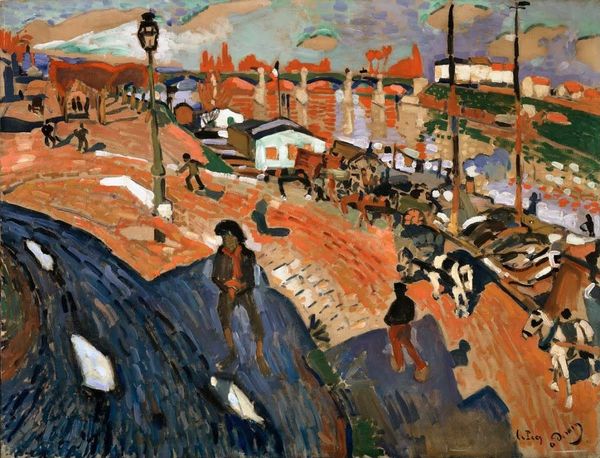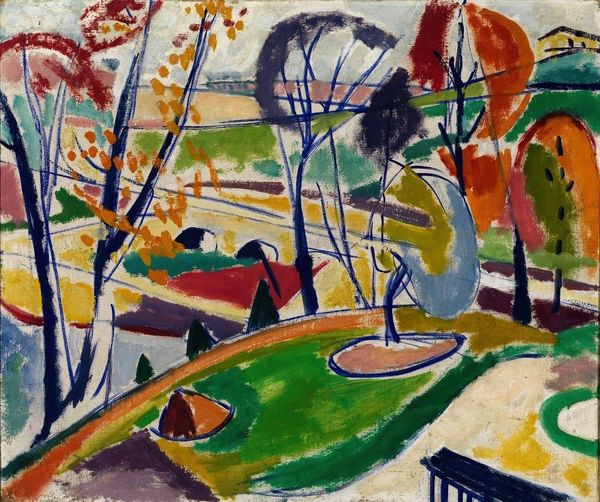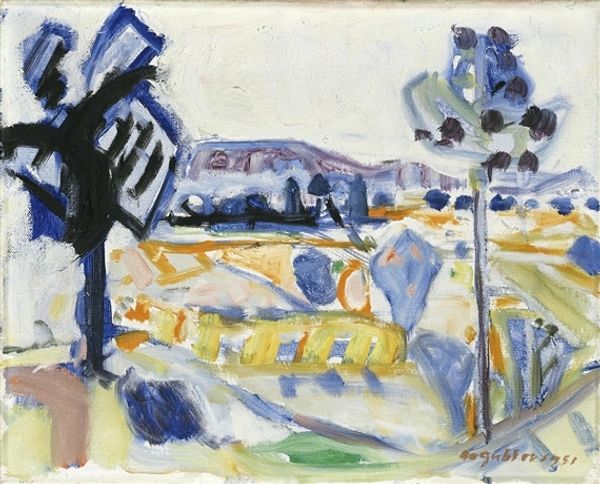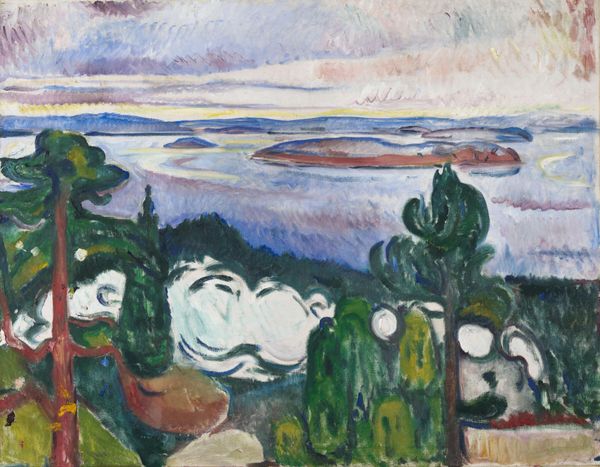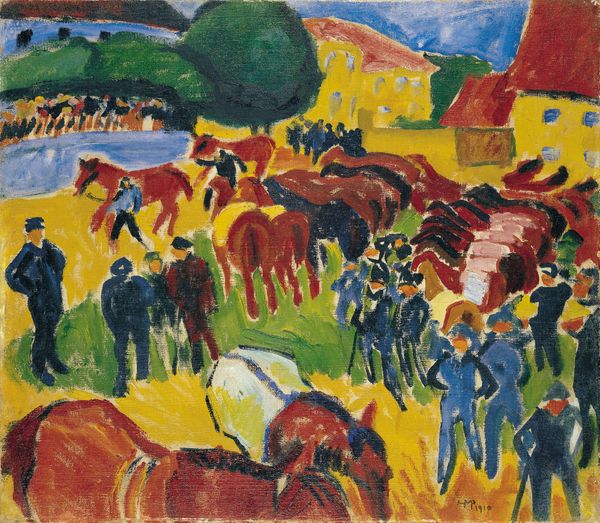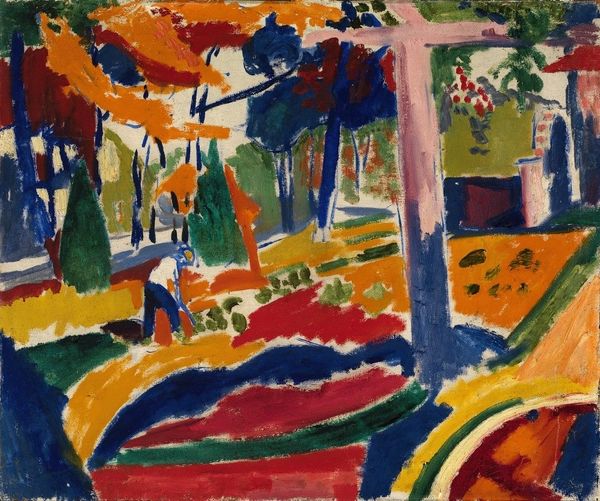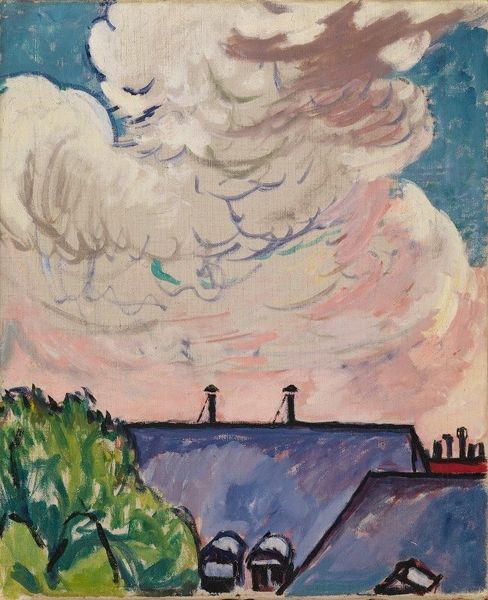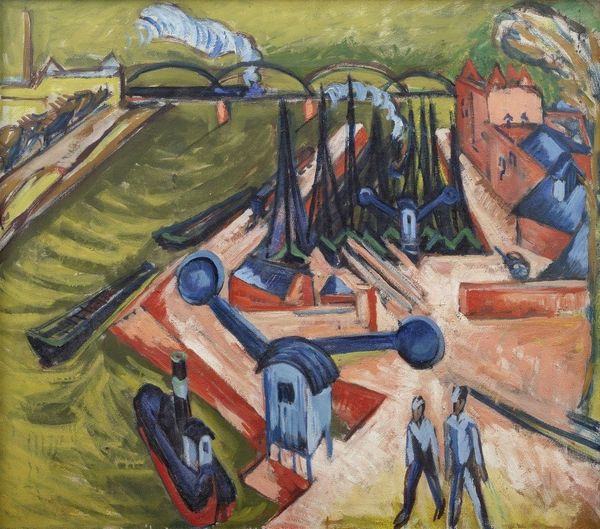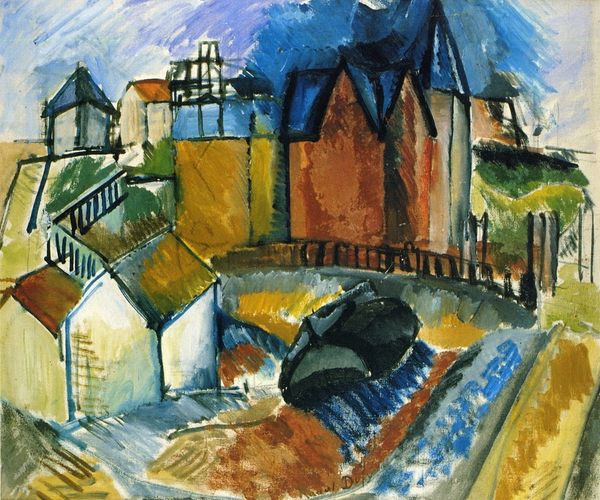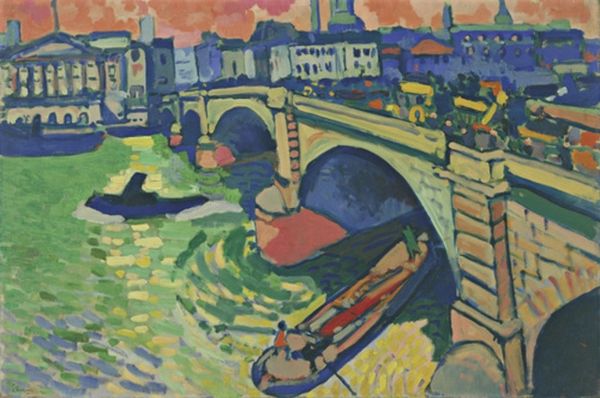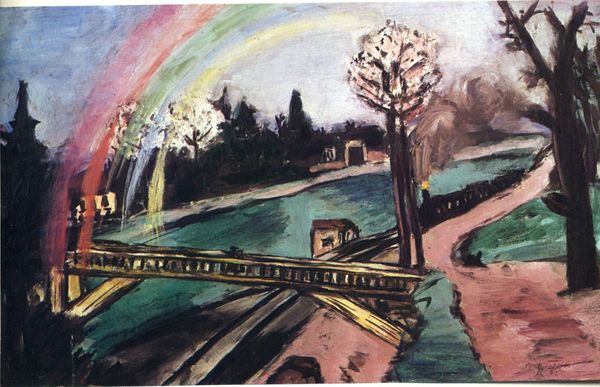
Dimensions: 53.5 x 63.5 cm
Copyright: Public domain US
Editor: Here we have Raoul Dufy's "Storm at Sainte Adresse" from 1909, an oil painting alive with color and bold strokes. The scene almost vibrates with energy, a chaotic yet captivating seascape. What do you see in this piece, beyond the surface level depiction? Curator: It's fascinating how Dufy captures a sense of modernity, isn’t it? This piece isn’t just a storm; it's a record of a changing society, a moment where industrialization met leisure. Sainte-Adresse, a popular resort, provided a stage for social interactions. But look closer. How does Dufy use the conventions of landscape painting to comment on public life? Editor: Well, there's the stark contrast between the leisure activities implied in the foreground and the industrial smoke stacks in the background, which almost feels like a commentary on the cost of progress... Curator: Exactly. Dufy places the viewers in an almost elevated vantage point looking down on the sailing, thus we can’t avoid observing these figures. The use of bold color feels related to similar experiments in Fauvism; what purpose could such arbitrary use of colour serve in its overall reception to contemporary audiences? Editor: It emphasizes the energy of the scene, sure, but could it also challenge the traditional, more "realistic" expectations of landscape painting at the time? Curator: Precisely! He’s signaling a break with the past, embracing new ways of seeing and representing the world. The painting’s public display became part of a larger cultural conversation about the direction of art and society, a point of departure for the changing visual conventions. This shift made art accessible and more diverse. It’s an expression that changed culture and society through visual engagement. Editor: That's incredible, I hadn't thought about it that way. It really opens up the painting, knowing it wasn’t just a depiction but also an agent of change! Curator: Absolutely. Understanding the socio-political backdrop is key to appreciating its true significance. It truly highlights the value that an artist places on their work when expressing it publicly.
Comments
No comments
Be the first to comment and join the conversation on the ultimate creative platform.
